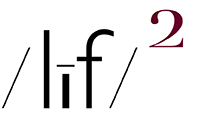RE; THE TITLE OF THIS ENTRY: I WAS NOT ACTUALLY on my way to a forum. But the name of that movie popped in my head when I was thinking about how a funny thing happened while I was working my way through my photo library folder looking for a few pictures for submission to a juried exhibition titled, The Poetry of the Ordinary.
It is also worth noting that what happened was not really “funny” but it was arguably laughable that, once again, I discovered a body of work lurking / hiding in my photo library. A body of work that I am titling, Ordinary Life.
Background: As I have previously noted, I have been “experimenting"“ with the concept of making full-frame pictures with the iPhone PORTRAIT setting. About a month ago, I put together 12 such pictures and made a POD photo book titled, A Random Sense of Form, in which is this Statement:
Every day after arising, I move about my house engaging in daily activities which some might consider to be the humdrum of an ordinary life. In doing so, my eye and sensibilities are often pricked by intimate tableaux which evince the potential, when isolated within the frame I impose upon it with my picture making device, for the making of a photograph with interesting visual form.
Even though these pictures are anchored by a truthfully rendered referent, they are rarely about the thing so depicted. Rather, it is the perceived form-the coming together of color, line, shape, space, texture, and value-that I see and photograph which, for me, emerges in my photographs as interesting visual energy and form. Energy and form as found in the, seemingly, most unlikely of places in the everyday world.
When the book arrived from POD source, I showed it to a few interested parties who liked it very much. However, it was not until a few days ago that I picked the book up on my way to bed, settled into bed, and spent some time looking through it. As self-important / egotistical as it might sound, I was both impressed and surprised by the impression it made upon my eye and sensibilities when the pictures were viewed as images on paper, aka: prints, as opposed to viewing them, as I had been doing, on-screen. That experience caused me to think that I was onto something, picture making wise, and that I should concentrate on making a conscious effort-as opposed to my “normal” picture making MO of discursive promiscuity-to create a body of work of such pictures.
That written, it was the next day that a funny thing happened on my way to the forum (sorry, yet another metaphor) during which I “discovered” 40 full-frame pictures in my library made utilizing the iPhone PORTRAIT setting. A happening which made realize how utterly clueless I can be, every now and again, of the fact that I have been creating a body of work without the knowledge that I have been doing so.
In any event, it should be noted there were 2 things saved my picture making ass, unified seeing wise, in the “making” of this body of work. First and foremost, I remained true to my vision. That is, I pictured what I see (form) how I see it. And, second (completely as a result of using the iPhone PORTRAIT setting), the fact that the iPhone PORTRAIT setting requires, a requirement that I sometimes find annoying, that the focused upon referent be within 8 feet of the iPhone. This demand results in the fact that the plane of focus in my pictures all fall within a fairly uniform distance from my picture making position. And, of course, the use of the PORTRAIT setting results in an (apparent) visually similar limited DOF (the visual point of this exercise).
In conclusion, I can write with a firm conviction-and my tongue firmly embedded in my cheek-that I am sure glad that I had the right camera with me when I made these pictures.
